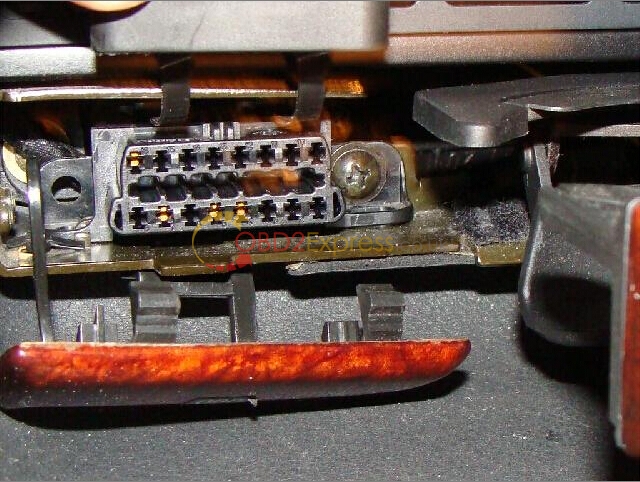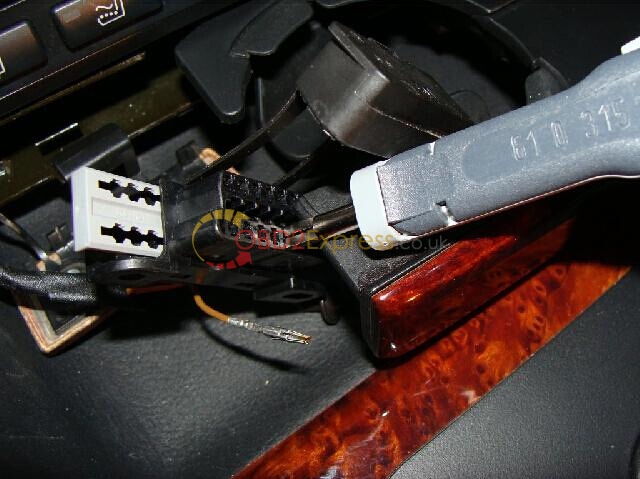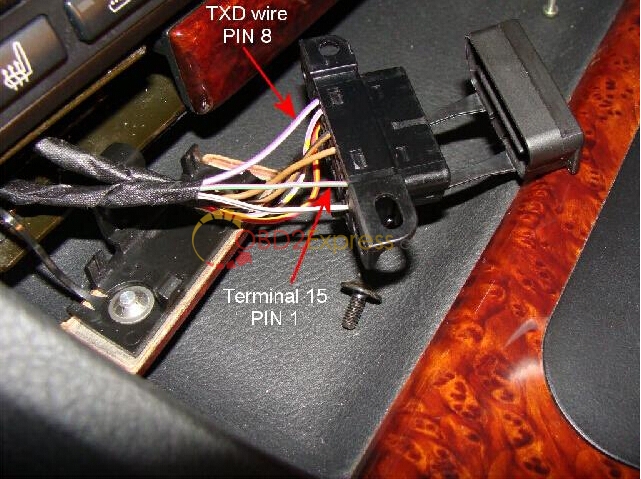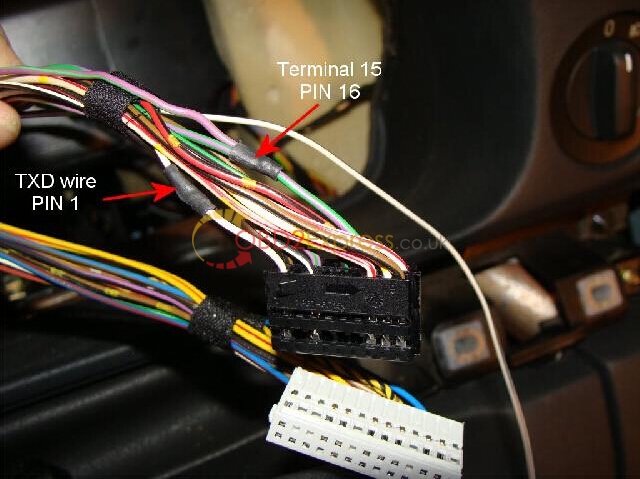Old BMW E38 and E46 have 20 PIN underhood connector rather than standard OBD II 16 Pin diagnostic socket.
In contrast, the OBD II port allows you to keep the hood down, drive the car and sit in the driver or passenger seat to use your diagnostic tools (BMW ICOM, INPA, BMW Scanner v1.4.0 etc).
With the hood down you also keep the air intake flaps open for the climate control. Only problem is the ODBII only allows access to a limited number of control modules and if you’re using DIS on a GT1 machine with a DK (yellow Diagnostic Head), the Auto ID will not work correctly as there is no switched power (Terminal 15) on the OBDII socket.
You can either hook up a 20-pin to-16-pin diagnostic connector underhood or modified your diagnostic port to D-bus. Modification is certainly at risk. But I tried and it worked. You are on your own risk.
BMW upgraded the OBDII diagnostic socket in 2001 to allow access to all control modules for all sales models except the E38 7-Series and the Z3. This upgrade was done by adding 3 pins to the ODBII:
TXD to PIN 8
Term 15 to PIN 1
TD (engine RPM) to PIN 9
Time for a retrofit…
Here is a little tutorial on adding the Diagnostics Bus (D-Bus) to OBD II connector of a 04/1999 build 740i, Anthracite w/ Black Montana Leather.
According to WDS the instrument cluster (IKE) has all 3 of these signals. Now that we know where to tap into, we need the connectors:
3 of 61 13 8 366 598 FLAT SPRING CONTACT FOR MICROTIMER
I think this is really a Micro-timer II Series contact based on Tyco Electronics website. I also noted that gold plated connectors are rated for 100 insertion and removals. This is much higher than the tin plated version (only 10). I also purchased the Microtimer II contact removal tool – 83 30 0 495 397. I wanted to confirm I had the correct contacts and this allowed me to remove one to verify.
Parts ordered:
Here is what we are starting with.

Next I removed the single screw to the right of the OBDII connector. I find opening the cup holder gives more space. Then pulled the white lock out of the OBDII connector in order to remove a contact. This is not necessary if you’re just adding contacts.

Here I’ve removed one contact.

Using spare wires very similar in color to that called out in WDS, I crimped the contacts in place (using a Sargent 1028CT tool), wrapped them in BMW harness tape, then installed them in the OBDII connector and ran the bundle to the instrument cluster (had to remove the Climate Control, Nav monitor and wood trim next to steering wheel).

For TXD I tapped into the White w/ Violet stripe wire going into Pin 1 on the 18 pin X10113 white connection on the back of the IKE.
For switched power I tapped into the Green w/ Violet stripe wire going into Pin 16 on the 18 pin X10113 white connection on the back of the IKE. This goes to Fuse 18 which is 5 Amps compared to the underhood Pin 16 which goes to Fuse 22 at 10 Amps. I expect this should be sufficient for whatever diagnostic equipment you have hooked up.
Next was TD (engine RPM), but there was no wire going to PIN 3 on the 26 pin blue connector. So I left my 3rd wire disconnected.

After all the parts were put back together I hooked up the GT1 system to the OBDII connector and Auto-ID was able to identify all the installed modules and the short test worked just fine.
And if anyone knows what the TD wire is used for, please chime in…













